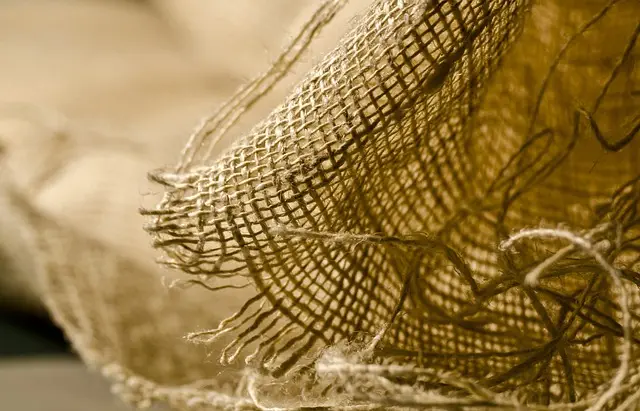Muscle soreness from intense exercise or chronic pain conditions prompts the search for effective natural pain relief solutions. The Perfect Kratom Strain stands out as a potential remedy due to its alkaloid profile that may offer analgesic benefits and improve mood. Among various kratom strains, Maeng Da and Bali are particularly noted for their strong analgesic properties. However, the effectiveness of any kratom strain for pain relief depends on individual physiology, dosage, and personal tolerance. It's essential to consult healthcare professionals before using kratom, as a personalized approach tailored to individual needs can help optimize its benefits while minimizing potential risks. Users should be aware that the legal status of kratom varies by region, and it's crucial to use it responsibly within the framework of local laws. In summary, for those considering kratom as part of a post-workout recovery plan, it's important to use it cautiously, starting with a low dose, and being mindful of its subjective effects and dosing needs, while also integrating proper rest, hydration, and medical advice if necessary.
Muscle soreness after an intense workout or physical activity is a common experience for many, often leading to discomfort that can impede recovery and progress. Exploring the connection between muscle soreness and kratom, this article delves into the potential benefits of incorporating the right kratom strain as part of your post-workout regimen. We will uncover how specific strains, particularly the perfect kratom strain, may offer relief from aches and pains, while also discussing safe usage practices to ensure optimal recovery without compromise. Join us as we navigate the relationship between muscle soreness and kratom’s role in alleviating this common issue.
- Unraveling the Relationship Between Muscle Soreness and Kratom: The Role of the Perfect Kratom Strain
- Identifying the Best Kratom Strains for Muscle Soreness Alleviation
- Safe Use and Considerations When Turning to Kratom for Post-Workout Recovery
Unraveling the Relationship Between Muscle Soreness and Kratom: The Role of the Perfect Kratom Strain

Muscle soreness can be a debilitating experience for many individuals, particularly those who engage in rigorous physical activities or have chronic pain conditions. The search for effective relief has led to an exploration of various natural remedies, among which kratom has gained attention due to its potential analgesic properties. Kratom, a tropical evergreen tree native to Southeast Asia, contains alkaloids that interact with the body’s opioid receptors, which may help alleviate pain.
The relationship between muscle soreness and kratom is complex and multifaceted. Different strains of kratom, each with its unique alkaloid profile, can influence the body’s response to pain. For instance, the Perfect Kratom Strain, often considered for its balanced effects, may offer both pain-relieving and mood-enhancing benefits. Users report that certain strains like Maeng Da or Bali, which are known for their potency and pain-killing properties, can provide significant relief from muscle soreness when used responsibly. The Perfect Kratom Strain’s efficacy in this context hinges on the careful selection of the strain, its dosage, and the individual’s unique physiology and tolerance level. It is crucial for individuals to consult with healthcare professionals before incorporating kratom into their wellness regimen, as the optimal strain can vary from person to person. This personalized approach to kratom use aims to maximize its benefits while minimizing potential risks associated with this natural substance.
Identifying the Best Kratom Strains for Muscle Soreness Alleviation

When seeking natural remedies for muscle soreness, kratom has emerged as a potential alternative due to its alkaloid profile that may provide analgesic effects. Among the numerous strains of kratom available, some are particularly renowned for their potential benefits in alleviating muscle pain. Mitragyna speciosa, the scientific name for kratom, contains over 40 alkaloids, with mitragynine and 7-hydroxymitragynine being the most prominent. For muscle soreness relief, strains like Maeng Da Kratom are often cited as one of the perfect kratom strains due to their balanced alkaloid profile that may offer both stimulating and pain-relieving effects. This strain is known for its potency, which could be beneficial for individuals experiencing muscle tenderness or discomfort after exercise or injury. Another strain that users frequently turn to is Bali Kratom, which is often associated with a calming effect that might assist in soothing sore muscles and promoting relaxation. The perfect kratom strain for an individual may vary based on personal tolerance, the severity of muscle pain, and the desired balance between energy and sedation. It’s important to approach the use of kratom with caution, as its effects can be highly subjective and dosing requirements can differ significantly from person to person. Always consult with a healthcare provider before incorporating kratom into your regimen for muscle soreness relief. Additionally, users should consider the legal status of kratom in their jurisdiction, as it varies across different regions.
Safe Use and Considerations When Turning to Kratom for Post-Workout Recovery

When incorporating kratom into your post-workout recovery routine, it’s crucial to approach its use with a blend of caution and informed judgment. The perfect kratom strain for muscle soreness relief is subjective and can vary depending on individual body chemistry and the nature of the workout. Generally, strains like Maeng Da or Bali are favored due to their balancing effects, which may help in easing discomfort while promoting a sense of well-being. To ensure safe use, start with a low dose to gauge your sensitivity before considering an increase in dosage. It’s also wise to consult with a healthcare provider if you have existing health conditions or are taking other medications to avoid potential interactions. Hydration and rest remain fundamental components of recovery; kratom should complement these practices, not replace them. Additionally, be mindful of the legal status of kratom in your region, as its availability may vary and be subject to regulation. By adhering to safe use guidelines and considering individual responses to different strains, kratom can be a valuable addition to your recovery regimen for post-workout muscle soreness relief.
Muscle soreness can be a significant hurdle for individuals engaging in physical activities, but the potential relief offered by kratom presents an intriguing alternative to conventional remedies. Our exploration has uncovered the complex relationship between muscle soreness and kratom, highlighting the importance of selecting the perfect kratom strain to optimize recovery. Among the various strains, certain types have been found to be particularly effective in alleviating post-workout discomfort. However, it is crucial to approach the use of kratom with caution, adhering to safe usage guidelines to ensure its benefits are fully realized without compromising health. As a summary, integrating the best kratom strains into your recovery regimen could play a pivotal role in maintaining an active and healthy lifestyle. Always consult with healthcare professionals before incorporating kratom into your wellness routine to guarantee safe and effective outcomes.






